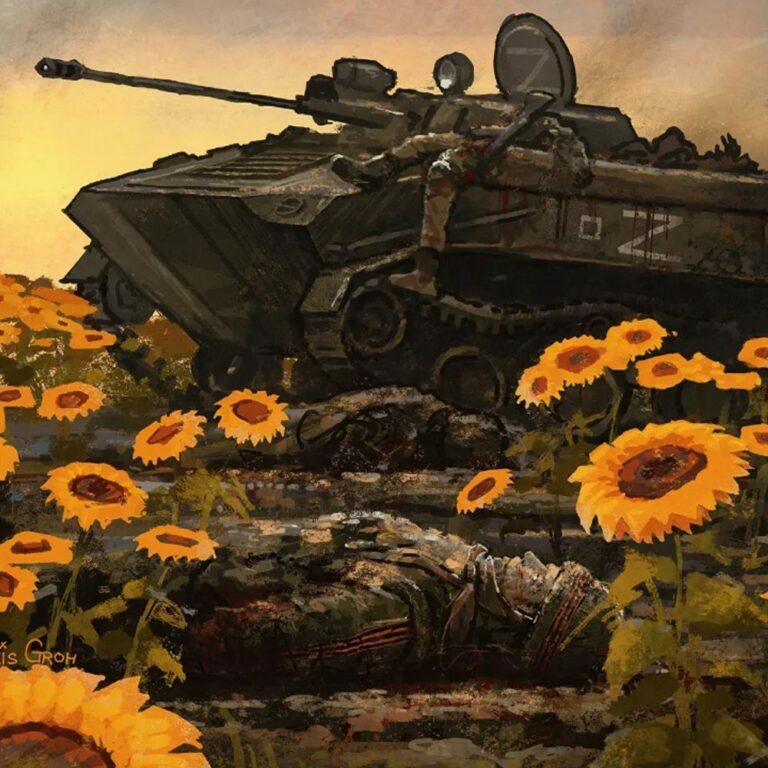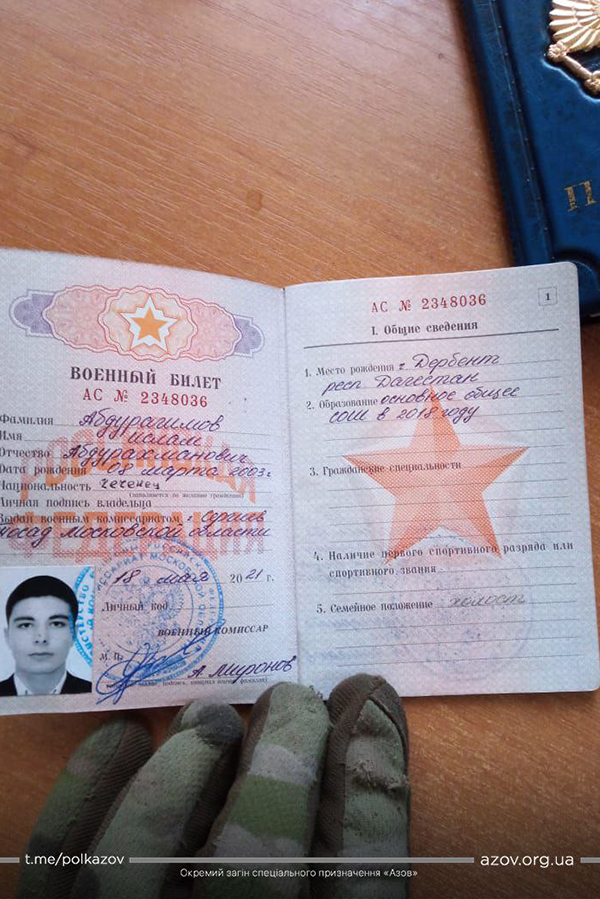
“You wanted this land, so now be buried in it”, — these are the lyrics from “Lullaby for the Enemies”, a song by the Ukrainian singer STASIK. These words have become a reality for thousands of Russian occupiers. Supposedly the “second army in the world”, which started a full-scale war in Ukraine, has been quiet about the real numbers of their casualties since the first days of the invasion. The dead bodies of the soldiers are often left behind, instead of being returned to their families to be buried in their “great homeland”.
As of 26.08.2022, Russia has lost almost 46,250 of its military personnel during 184 days of the war in Ukraine. This number continues to grow daily.

Russia, however, does not seem to hurry to recognise this figure, and to inform its citizens about the real losses. Public communications of the Ministry of Defence of the Russian Federation are, to put it mildly, inconsistent.
For a long time Russia did not publish any official statements at all, even though the name of the first Russian soldier killed in Ukraine was announced on the third day of the war. This information was published in the social media by the head of Dagestan, where the serviceman was from.
The first figure officially announced by the Russian Ministry of Defence was 498 dead (in the statement dated March the 2nd, a week after the beginning of the full-scale war). The real embarrassment occurred when the BBC News Russian counted 557 of the dead, and later on the information about 501 officially buried military personnel appeared. All this does not quite match the statements of the Russian Ministry of Defence. Someone there must have been really bad at maths at school.

And then on the 25th of March, a month after the invasion began, Russia at last officially announced a new figure — 1,351 dead — which, however, was just as far from the truth.
The official statement of the Ministry of Defence went like this, “Unfortunately, there are losses among our combat comrades in the course of the special military operation. As of today, 1,351 servicemen were killed and 3,825 were wounded”.
It seems that Russian authorities will continue their tradition of military myth-making, and will keep portraying its army as strong and… immortal. E.g. the chairman of the Defence Committee of the Russian State Duma announced in the beginning of June that Russia had practically stopped losing its military. Their counter of the dead froze at the mark of 1,351 people in March. Some Russian media even reported the same figure in their summary of the 100th day of the war (still called in Russia a “special operation”, by the way). And by the end of April certain media decided to add some 548 more dead to the officially recognised figures.
Looking back at other wars started by Russia, one can rest assured that the real losses will remain hidden from ordinary Russians. A popular Russian proverb — “the less you know, the better you sleep at night” — exists for a reason.
If Russians are eager to know more or to speak up about the war, then they should be aware that the Criminal Code of the Russian Federation has recently adopted a new article. According to it, distribution of any fakes about the Russian army, or any other actions aimed at discrediting the military may result in 3–15 years of imprisonment.
The first criminal proceedings have already been initiated. Everything is going according to the plan, as their bloody dictator says.

In the beginning of the full-scale invasion by Russia, Putin and military authorities denied sending their conscripts to Ukraine. In this situation, disclosure of information about the sum of the death gratuity for the families of those who died during the so-called “special operation” can be considered as a first step towards the official recognition of military losses by Russia.
At first, Putin priced the lives of his soldiers very modestly, if not to say pitifully. He planned to pay the families 11,000 roubles for the death of each valiant soldier of Russia. This equalled to $50 at the exchange rate of that time. Two days later, the price changed slightly — to 7,421,000 rubles. Putin promises to pay this sum as a one-off payment to the relatives of every soldier, who died during the “special operation”.
Never speak ill of the dead. Better not speak at all.
What makes Russia’s communications about this war so special is the “grassroots” nature of all the messages about deaths of military personnel in Ukraine. That is, it is not the government sources of Russia who are the first to publish the information, but the regional media or simply friends and relatives of the deceased.

Any mentions in media of dead Russian soldiers are marked by their heroism with the emphasis on “liberation” from “Ukrainian Nazis”.
The typical communication techniques of Russian propaganda include fragmented presentation of information, constant persuasion in the valour of the Russian army, and refuting the data provided by the Ministry of Defence of Ukraine.

Therefore, the ordinary people in Russia see a distorted picture – the one convenient to their government. Apparently, not even the oppositional media dare to risk acting as “the fourth power”, as they fear criminal liability according to Russia’s new law “On fakes”.
A curious media case happened on the 21st of March. The propaganda media outlet “Komsomolskaya Pravda” published and immediately retracted the article, which stated that approximately 10,000 Russian soldiers had been killed and more than 16,000 were wounded in the war in Ukraine.

In their “temporary” content “Komsomolskaya Pravda” referred to the data from the Ministry of Defence. Ukrainian media and military analysts consider the emergence of this article to be a planned “throw-in” that should have prepared the Russian audience for further statements. The real numbers of their dead are becoming harder to hide with every new day, since Ukrainian “information troops” are on duty. The information is also constantly published in Telegram channels such as “Cargo 200” (in Russia — the military identifier for transportation of dead bodies from the battlefield) and “Goriushko” (Grief). The relatives of Russian soldiers have been constantly calling the “Come Back Alive from Ukraine” hotline since the first hours of its opening.
How are Russian soldiers buried in Ukraine?
Russia still refuses to take back all the dead bodies of their soldiers. Foreign media outlets started publishing information about the use by the Russian army of mobile crematoriums. In this way Russia attempted to diminish the magnitude of the factual losses, destroying the evidence right on the spot. According to some media,disguising such mobile crematoriums as military good vehicles and sending them in military convoys has been a common practice for the Russian army for years. Social media and traditional outlets shared an image of such a mobile crematorium, which was likely used by the Russian army. “Likely” — because so far neither foreign nor Ukrainian media have any reliable evidence to confirm this information. The photo of a portable Russian crematorium is in fact a screenshot from a videoposted online back in 2013.

A popular slogan used by Russian propaganda during this war is “we never leave our own people behind”. But in reality hundreds of Russian soldiers’ bodies are left in the battlefield, as their army troops retreat. And it is Ukrainians who now have to bury Russian soldiers, mostly doing so in unmarked mass graves. This is done purely as a sanitary measure, so that the decomposing bodies would not become a health hazard to the residents of Ukrainian cities and villages, in which the enemies were liquidated.

Those Russian soldiers who survived not only often leave their fallen comrades in the battlefield – they also mine some of the bodies. The staff of Ukrainian funeral services often have to work only after the bomb disposal experts attended to the body. The morgues are swamped with the bodies of Russian soldiers, so the local authorities have to set up some pop-up ones.


According to the Ukrainian military and the State Emergency Service, some Russian soldiers died nameless because their commanders took away their IDs before the attack. Ukrainians later tried to identify the bodies by looking for any form of documentation or bank cards left in the military vehicles. If anything is found, they can run a quick search in social media and in the majority of cases the puzzle gets solved. Unfortunately, not all the enemies become that “lucky”.
Dead Russian soldiers do not just reunite with nature by dissolving in fertile Ukrainian chernozem. Sometimes they are “helpful” in rescuing Ukrainian soldiers from captivity. According to the Ukrainian military, there are unofficial exchange rules, where 2 prisoners of war become released in exchange for 6 Russian bodies.

